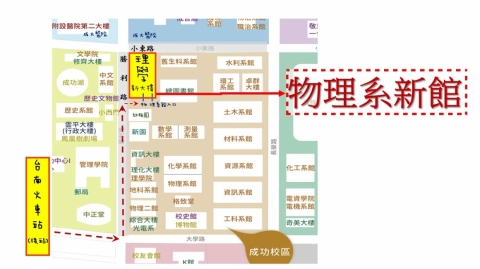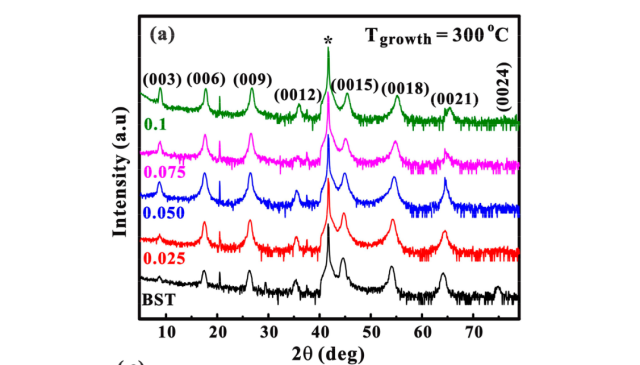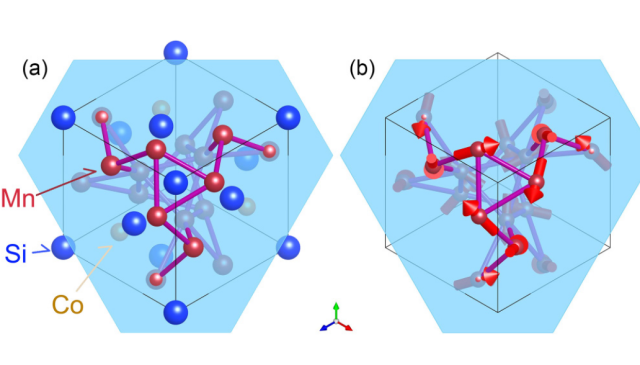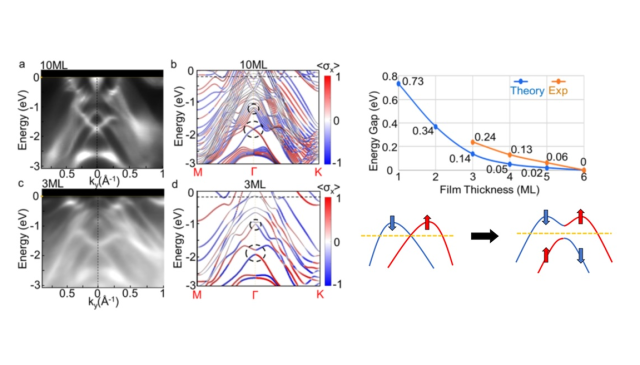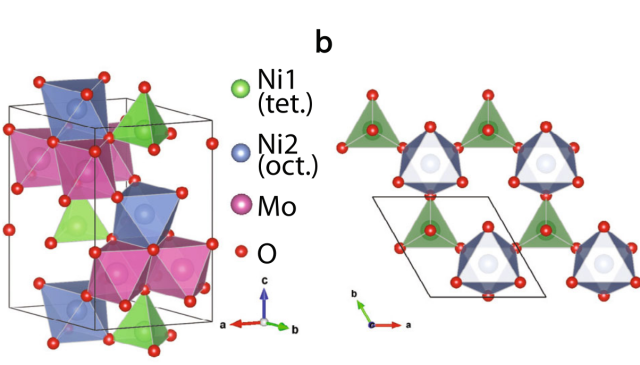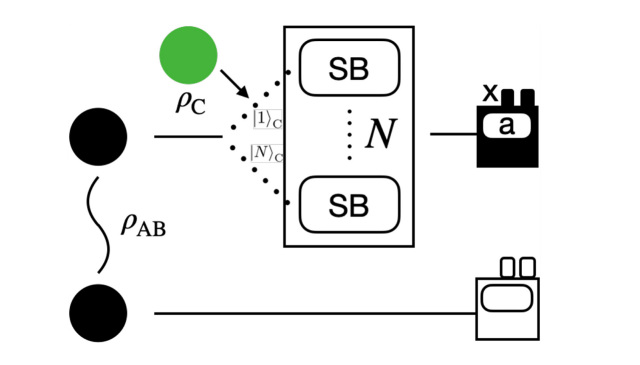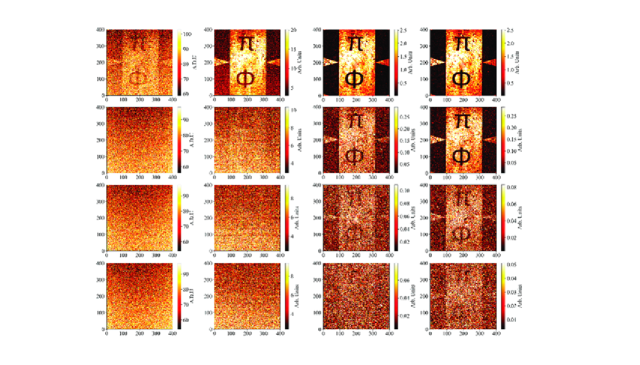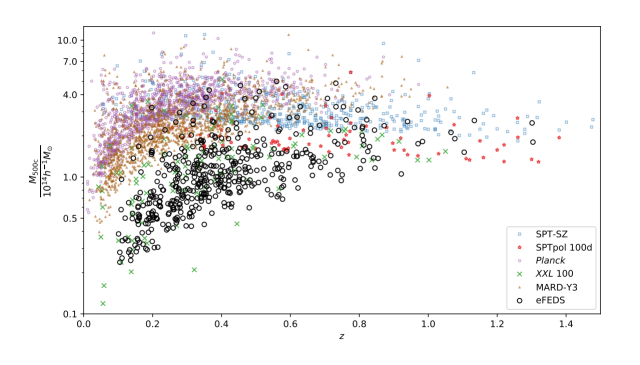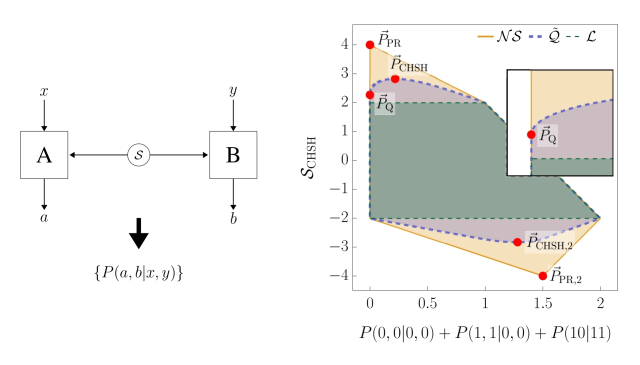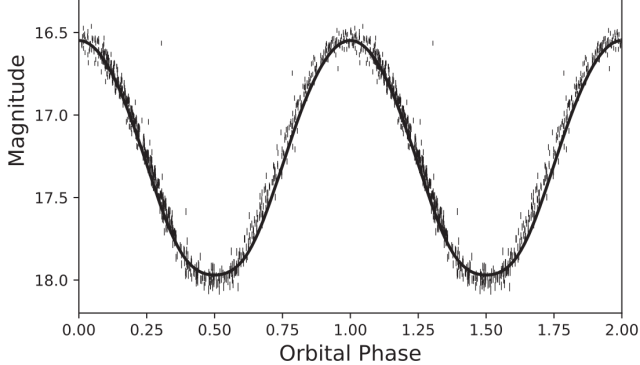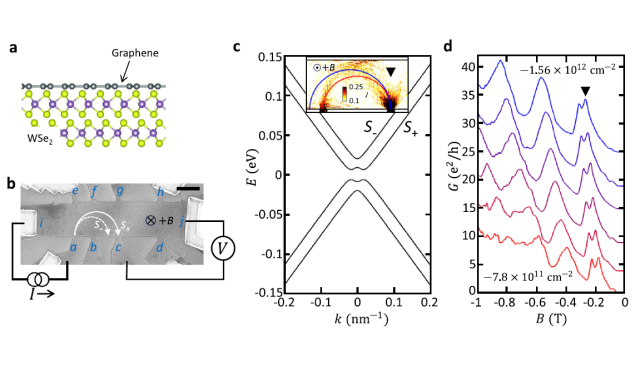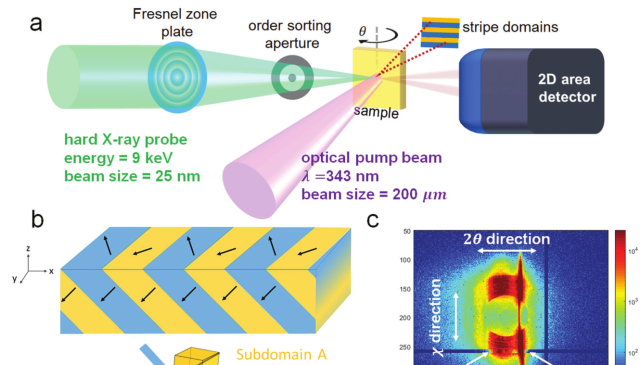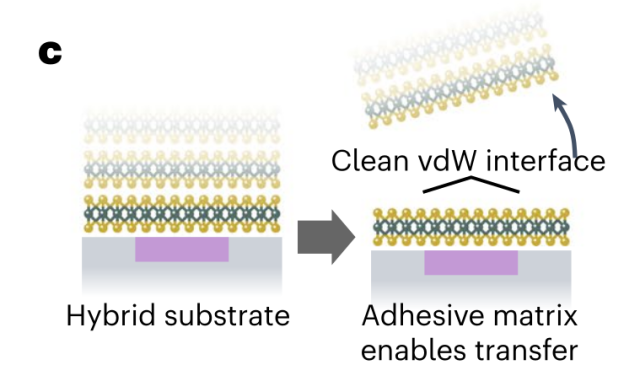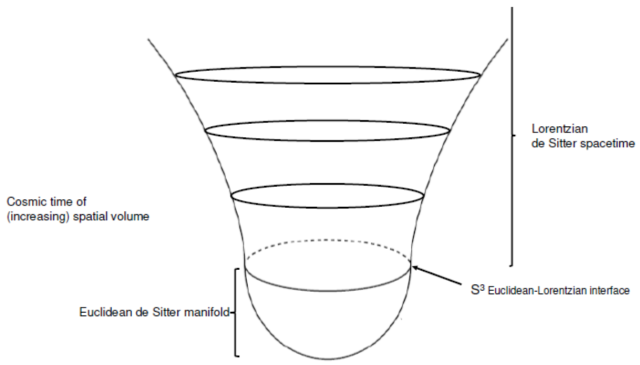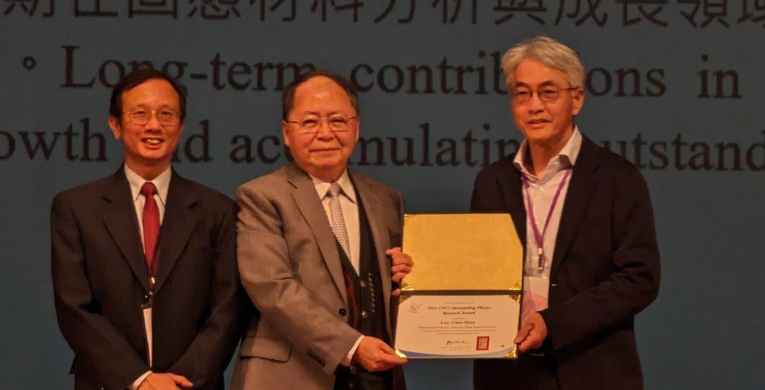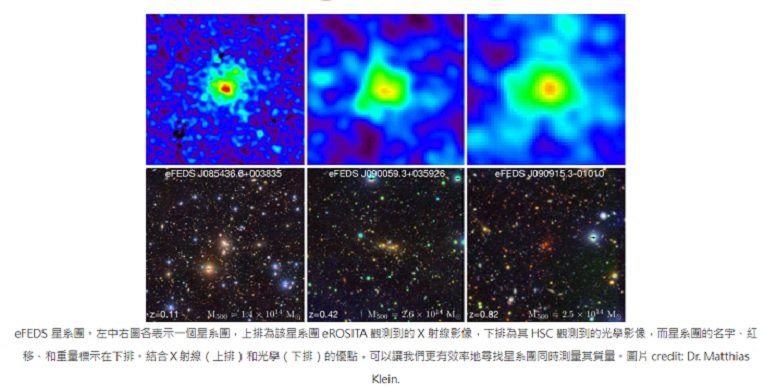系所公告
Department Announcement研究成果
Research-
2024 / 03 / 06
(一月)黃榮俊教授與合作者研究並優化拓撲絕緣體
黃榮俊教授與合作者研究拓撲絕緣體的磁性和電性,並瞭解如何設計和優化。發表在 Nanomaterials (2024)
-
2024 / 04 / 05
(二月)張烈錚教授和合作團隊研究反鐵磁材料
張烈錚教授和合作團隊對反鐵磁材料Mn3CoSi的物理性質進行了初步的探討。發表在 Physical Review Research (2024)
-
2023 / 05 / 10
(三月)張泰榕教授團隊預測材料PdTe2在3層薄膜厚度下將打開狄拉克能隙,這將助益於其拓樸超導態的形成
張泰榕教授團隊預測材料PdTe2在3層薄膜厚度下將打開狄拉克能隙,這將有助於其中的自旋配對進而形成拓樸超導態。
發表在 Nano Letters (2023)。 -
2024 / 02 / 23
(四月)黃建龍教授與合作者找尋具有阻挫效應的新穎量子磁性材料
黃建龍教授與美國萊斯大學團隊跨國合作,透過實驗研究了Ni2Mo3O8的不尋常磁性行為。发表在 Nature Communications (2023)
-
2023 / 06 / 30
(四月)陳岳男教授團隊對一量子系統引入多個操縱性破壞通道進行量子疊加下再現原先系統的量子操縱性
陳岳男教授團隊利用多個操縱性破壞通道進行量子疊加,研究此疊加狀態可以再現原先系統中遭破壞的量子操縱性。
發表在 Physical Review A (2023)。 -
2023 / 08 / 22
(五月) Paul-Antoine Moreau教授跨國合作,開拓一全場同相成像系統
Paul-Antoine Moreau教授跨國合作提出一全場同相成像系統,能在短波紅外區域進行單光子級別的成像。
發表在 PNAS (2023)。 -
2023 / 09 / 02
(六月)邱奕儂教授與德國慕尼黑大學團隊合作,藉助觀測資料,並透過理論和模型對比研究宇宙暗能量
邱奕儂教授與德國慕尼黑大學團隊合作,結合兩大巡天計畫的觀測資料,透過理論和模型對比研究宇宙暗能量。
發表在 Monthly Notices of the Royal Astronomical Society (2023)。 -
2023 / 09 / 01
(七月)梁永成教授團隊與其合作者研究量子關聯性在無信號關聯性集合邊界上的幾何結構
梁永成教授團隊與其合作者探討了在最簡單的貝爾實驗中,量子關聯性集合與無信號關聯性集合邊界上的幾何結構問題。
發表在 QUANTUM (2023)。 -
2024 / 02 / 21
(八月)李君樂教授與合作者利用多個望遠鏡的觀測資料分析白矮星-矮恆星雙星系統
李君樂教授與他的合作者利用凌日系外行星巡天衛星、利物浦望遠鏡、鹿林一米望遠鏡的觀測資料分析白矮星-矮恆星雙星系統ASJ2055。發表在Astrophysical Journal Letters (2023).
-
2023 / 11 / 13
(九月)劉明豪教授與香港大學實驗團隊合作發現石墨烯的自旋軌道耦合受二硒化鎢的鄰近效應而大幅提升
劉明豪與港大團隊合作,透過實驗及模擬證實以WSe2為石墨烯的基板時,其鄰近效應使自旋軌道耦合強度增強兩個數量級。
發表在 Nature Communications (2023)。 -
2024 / 02 / 21
(十月)楊展其老師與合作者以X光繞射技術探究多鐵材料的結構動力學特性
利用X光對鐵電疇域進行在超快時間尺度下的動態操作,可應用在快速訊息儲存和交換等技術。發表在 Advanced Materials (2023)
-
2024 / 02 / 23
(十一月)呂欽山教授與合作者克服二维材料黏合傳統基板問題
呂欽山教授之晶體成長實驗室與美國麻省理工學院團隊合作,克服二維材料無法僅利用凡德瓦作用力直接轉移在二氧化矽、氧化鋁等傳統基板表面。發表在 Nature Electronics (2023)
-
2024 / 02 / 23
(十二月)許祖斌教授討論宇宙時間與宇宙初始狀態
許祖斌教授在漢彌頓式加入 Cotton-York 項會劇烈地改變宇宙的初值狀態 。發表在 Universe (2023)。






